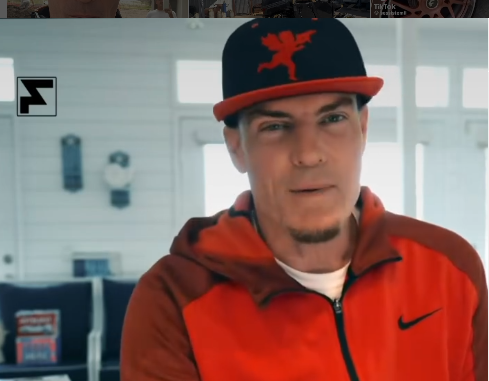In 2025, Vanilla Ice’s net worth is a remarkably amazing $20 million, which represents not only a brief moment of celebrity but also a highly diversified financial portfolio accumulated over many years. Even though “Ice Ice Baby” established him a household name in 1990, it’s even more amazing that he still makes almost $400,000 a year from that one song. His earnings from a single song are astonishingly effective at maintaining long-term riches in an era where streaming has drastically decreased the royalties received by many musicians.

His album To the Extreme shot to the top of the charts in the early 1990s. It became the fastest-selling hip-hop album of its era in addition to topping Billboard. He shot to pop prominence with the song “Ice Ice Baby,” which lifted a bassline from Queen and David Bowie’s “Under Pressure.” The first hip-hop single to reach the top of the Billboard Hot 100 was this one. The public listened to his music in large quantities, despite the fact that critics were frequently harsh.
Vanilla Ice – Personal, Career, and Net Worth Overview
| Attribute | Detail |
|---|---|
| Full Name | Robert Matthew Van Winkle |
| Stage Name | Vanilla Ice |
| Date of Birth | October 31, 1967 |
| Age (2025) | 57 years |
| Place of Birth | Dallas, Texas, USA |
| Raised In | Miami, Florida, USA |
| Profession | Rapper, Actor, TV Host, Real Estate Investor, General Contractor |
| Debut Album | Hooked (1989), reissued as To the Extreme (1990) |
| Breakout Song | “Ice Ice Baby” |
| Current Net Worth (2025) | $20 million |
| Main Income Sources | Royalties, Real Estate, Reality TV, Renovations, Music, Acting |
| Official Website | www.vanillaice.com |
However, Vanilla Ice’s fame quickly plateaued, as is the case with many quickly rising talents. But what came next was a pivot rather than a collapse. He went from being a recording artist to a real estate developer and reality TV celebrity by utilizing his brand and personal abilities. He was able to create a remarkably secure and remarkably long-lasting financial identity through this reinvention.
His story seems especially novel in the context of celebrity finances. Few musicians from that time period are still financially viable if they don’t consistently reach the top of the charts. Evolution was not only feasible, but also profitable, as demonstrated by Vanilla Ice. The Vanilla Ice Project, his television endeavor, ran on the DIY Network for nine seasons. His expertise in construction and real estate flipping was demonstrated on the show, which gave viewers a behind-the-scenes look at his practical remodeling of opulent Florida mansions. He gained a new following and a new source of revenue because to his skill and media presence.
The breadth of his financial approach was further exposed by court filings from his 2018 divorce. He had at least $3 million in liquid assets at the time, and he owned 15 homes, a yacht, and a fleet of cars totaling about $5 million. Even while such figures are already noteworthy, growing real estate prices could greatly underestimate the true value of his properties today.
These revelations point to a celebrity who meticulously restored their fame, plank by plank, rather than merely holding onto it. It may seem like a big change to go from being a top-charting rapper to a general contractor, but it was surprisingly adaptable. It enabled him to stay in the spotlight as a professional with real-world experience rather than as a sentimental gesture. His popularity on television helped sustain his reputation and, more significantly, his brand while also bringing in an additional source of revenue.
His professional path is similar to that of other celebrities who have reinterpreted their public personas. Like Snoop Dogg’s numerous commercial endeavors or Jessica Alba’s foray into consumer products with The Honest Company, Vanilla Ice ventured into areas that many stars overlook. He launched The Vanilla Ice Home Show in 2022 and made appearances on reality series like The Surreal Life, investing not only in houses but also in visibility. These platforms demonstrated a startling level of business acumen and confirmed his versatility.
The lasting cultural impact of “Ice Ice Baby” is very helpful to his path. Decades after its release, the song is still a mainstay of nostalgia for the 1990s. Consistent royalty checks are ensured by its endurance in television mentions, ads, and streaming playlists. Legal documents state that the royalties alone generate a consistent $400,000 each year. When weighed against his returns, that number, particularly when paired with his varied income, reveals a fairly modest lifestyle.
From a social perspective, Vanilla Ice’s metamorphosis contradicts popular beliefs about waning celebrity. Instead of withdrawing from public life or attempting to imitate previous successes, he welcomed reinvention. By doing this, he became a subtly symbolic representation of both personal flexibility and financial resiliency. His story serves as a reminder that even typecast celebrity can be redefined with perseverance and adaptability.
It can be difficult for medium-sized celebrities to stay financially solvent, particularly if their hit is strongly associated with a certain era. However, Vanilla Ice actually turned that story on its head. He maintained his relevance while amassing fortune through content production, brand licensing, and property flipping. It wasn’t always a straight line. His film Cool as Ice, in which Naomi Campbell costarred, was a box office bust, and his second studio album, Mind Blowin, was a commercial failure. But instead of retreating, each failure seemed to spur a reorientation.
At the age of 57, Vanilla Ice is now more of a diverse professional than a rapper clinging to his former fame. He is a creative contractor, a reliable performer, and an investor who has obviously learned from his mistakes. For artists navigating the internet age, his ability to bounce back from criticism, market swings, and the whims of fame is especially motivating.











